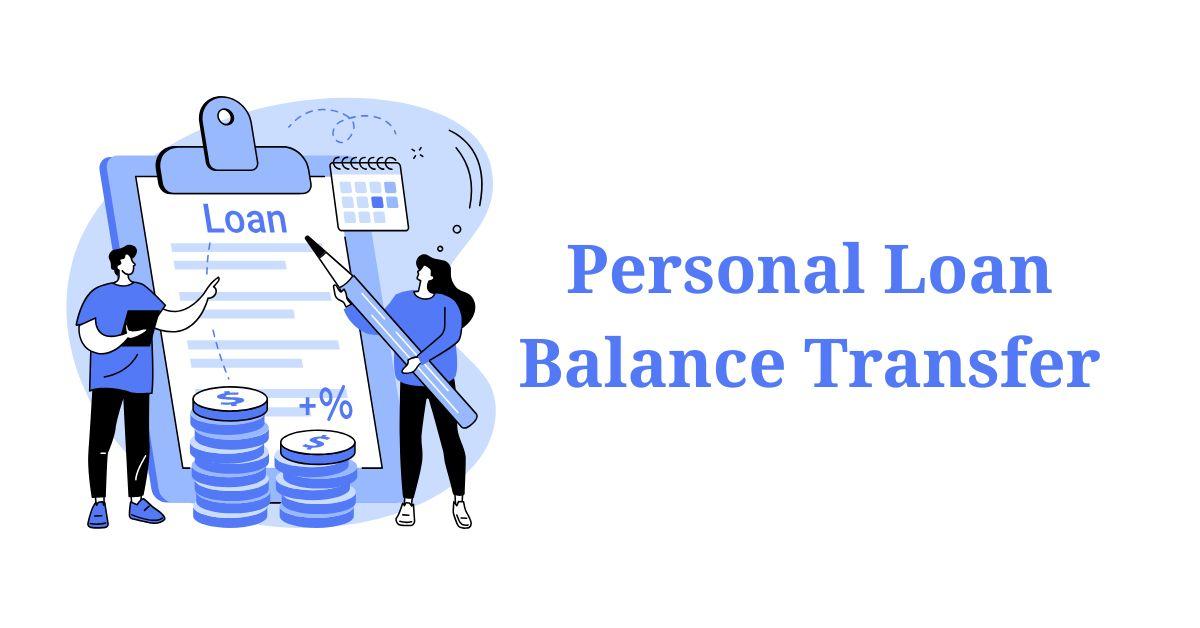How Safe Is It to Transfer Your Personal Loan Balance Online?

Convenience and speed have become essential in every aspect of life—including banking and financial services. One of the increasingly popular features offered by banks and NBFCs (Non-Banking Financial Companies) is the personal loan balance transfer online facility. This option allows borrowers to move their existing loan from one lender to another that offers better terms, such as lower interest rates or flexible repayment options.
But as with any online financial transaction, many people wonder: "How safe is it to transfer your personal loan balance online?"
Let’s explore the safety aspects, precautions to take, and tips to ensure a secure and successful balance transfer process.
What Is a Personal Loan Balance Transfer?
A personal loan balance transfer involves shifting the outstanding amount of your current loan from one lender to another. Borrowers usually opt for this when the new lender offers a lower interest rate, better service, or improved repayment terms. The idea is to reduce the total interest burden and manage EMIs more efficiently.
Online personal loan balance transfers offer the added advantage of being quick, paperless, and accessible from the comfort of your home.
Is Online Balance Transfer Safe?
The short answer is: Yes, it is generally safe—provided you take the right precautions. Reputed banks and financial institutions use advanced encryption, multi-factor authentication, and secure servers to ensure that your data is protected during the application and verification process.
However, just like any online transaction, the risk increases if you are not cautious. Cybercriminals are always on the lookout for loopholes to exploit unsuspecting users. So, while the system itself is secure, your online behavior and the platforms you use matter significantly.
Key Safety Measures Taken by Lenders
Reputable lenders follow stringent cybersecurity protocols to protect users and data during online transactions. These include:
1. Data Encryption
Your sensitive data, such as PAN, Aadhaar number, salary slips, and bank account details, are encrypted during transmission. This ensures that even if the data is intercepted, it cannot be read or misused.
2. Secure Servers and SSL Certificates
Financial institutions use HTTPS-enabled websites and secure servers that provide a safe environment for online interactions. Always check for a padlock icon in the URL bar when entering personal information.
3. Two-Factor Authentication (2FA)
Before completing any critical action, such as submitting an application or signing loan documents digitally, lenders will often require OTP (One-Time Password) verification to confirm your identity.
4. Regulatory Compliance
Lenders in India must comply with regulations from the Reserve Bank of India (RBI), ensuring that the process is governed by fair practices and customer protection guidelines.
Risks and How to Avoid Them
Despite the safety measures in place, risks still exist—mainly due to user negligence or reliance on untrustworthy platforms. Here’s how to stay protected:
1. Avoid Third-Party Loan Apps Without Proper Reviews
Many fraudulent apps pose as lenders or facilitators. Always apply through the official website of the bank or a trusted aggregator.
2. Verify the Lender’s Legitimacy
Before sharing any information, verify that the institution is registered with the RBI or another recognized financial authority. Look for customer reviews, official contact details, and licensing information.
3. Beware of Phishing Scams
Do not click on links received via SMS, email, or social media that claim to offer "instant balance transfer at zero interest." Always type the lender’s website directly into your browser.
4. Don’t Share Sensitive Information Over Public Wi-Fi
Use a secure and private internet connection when applying for a loan balance transfer. Public networks are vulnerable to data theft.
5. Check for Red Flags
Unexpected calls, emails demanding upfront payments, or offers that seem "too good to be true" should be treated with suspicion.
Tips for a Secure Online Balance Transfer Process
-
Use strong, unique passwords for your banking and financial accounts.
-
Enable OTP alerts and email notifications for all transactions.
-
Keep your devices updated with the latest security patches and antivirus software.
-
Review the terms and conditions carefully before agreeing to a balance transfer.
-
Monitor your credit report post-transfer to ensure the old loan is closed properly.
Benefits of a Secure Online Balance Transfer
When done securely, online personal loan balance transfers offer numerous advantages:
-
Lower interest rates, reducing your total loan cost.
-
Flexible repayment tenure, improving cash flow.
-
Better service or digital features, such as autopay, EMI holidays, or mobile tracking.
-
Faster processing, usually within 48–72 hours.
-
Convenience, with no need to visit a branch or submit physical documents.
Conclusion
Transferring your personal loan balance online is not only convenient but also safe—if you are cautious and well-informed. As more financial services go digital, banks and NBFCs have strengthened their cybersecurity frameworks to protect customers.
However, the onus is equally on you to verify platforms, safeguard personal information, and be vigilant against fraud. If done right, a personal loan balance transfer online can significantly ease your financial burden and improve your loan experience.






